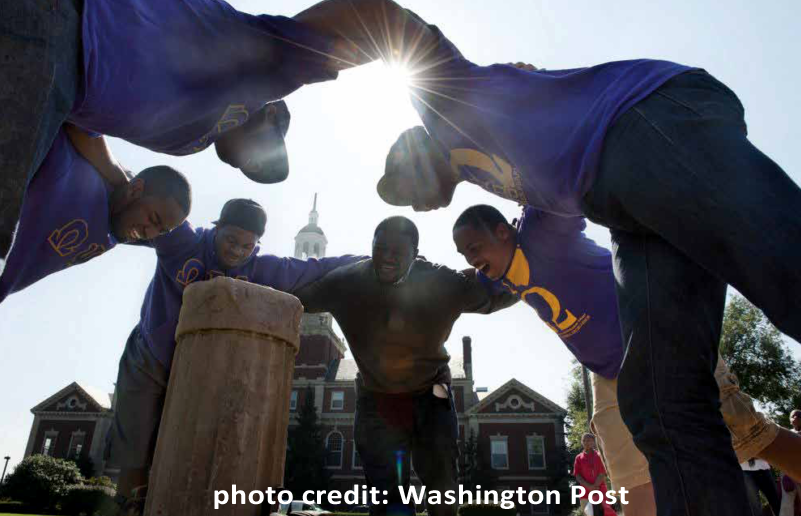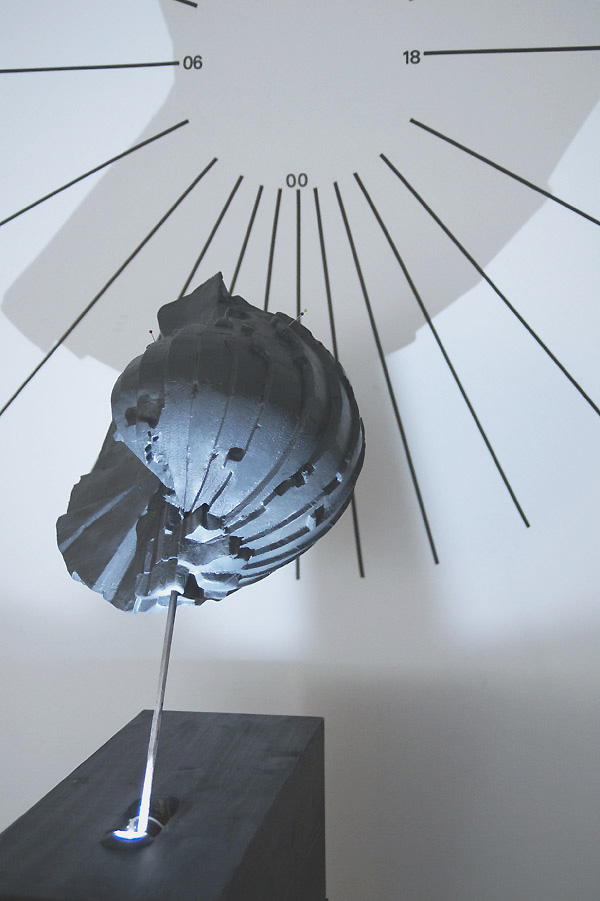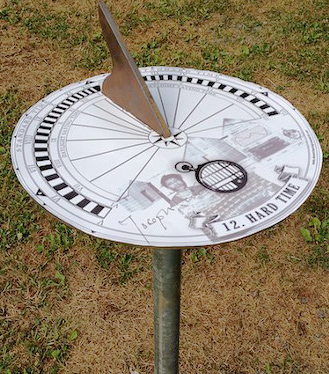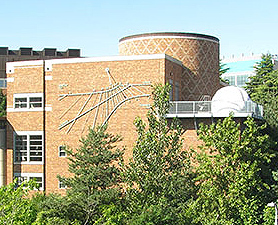- Details
- Hits: 13757
 What do Omega Psi Phi fraternity of Howard University Washington DC, Merton College in Oxford, Nashotah House Theological Seminary in Wisconsin, and Lewis Carroll's poem Jabberwocky all have in common? Dancing and ceremonies around a sundial! In Carroll's poem of 1885 "the slithy toves did gyre and gimble in the wabe" and as Alice explains to Humpty Dumpty, “Toves are curious creatures that are something like badgers, something like lizards, and something like corkscrews. They make their nests under sun-dials and live on cheese." and “Wabe is the grass-plot round a sun-dial. It is called like that because it goes a long way before it, and a long way behind it. And a long way beyond it on each side."
What do Omega Psi Phi fraternity of Howard University Washington DC, Merton College in Oxford, Nashotah House Theological Seminary in Wisconsin, and Lewis Carroll's poem Jabberwocky all have in common? Dancing and ceremonies around a sundial! In Carroll's poem of 1885 "the slithy toves did gyre and gimble in the wabe" and as Alice explains to Humpty Dumpty, “Toves are curious creatures that are something like badgers, something like lizards, and something like corkscrews. They make their nests under sun-dials and live on cheese." and “Wabe is the grass-plot round a sun-dial. It is called like that because it goes a long way before it, and a long way behind it. And a long way beyond it on each side."
 At Howard University in the center of the main campus quadrangle is a bronze sundial on a 3-foot fluted limestone pedestal, gifted in 1929 to the university in honor of Benjamin Banneker, surveyor of the city of Washington DC, clockmaker, and sundialist.
At Howard University in the center of the main campus quadrangle is a bronze sundial on a 3-foot fluted limestone pedestal, gifted in 1929 to the university in honor of Benjamin Banneker, surveyor of the city of Washington DC, clockmaker, and sundialist.
- Details
- Hits: 11150
 With all due respects to Shakespeare, time will always be with us, and signifies quite a lot. The Harvard-Smithsonian Center for Astrophysics is organizing a symposium dedicated to Time and Culture to be held 5-9 June 2016 at Harvard's Northwest Lab. According to the symposium organizers:
With all due respects to Shakespeare, time will always be with us, and signifies quite a lot. The Harvard-Smithsonian Center for Astrophysics is organizing a symposium dedicated to Time and Culture to be held 5-9 June 2016 at Harvard's Northwest Lab. According to the symposium organizers:
"The symposium aims to set the stage for future timekeeping standards, infrastructure, and engineering best practices for astronomers and the broader society. At the same time the program will be cognizant of the rich history from Harrison's chronometer to today's atomic clocks and pulsar observations. The theoreticians and engineers of time will be brought together with the educators and historians of science, enriching the understanding of time among both experts and the public."
The definition of the second has changed several times over the last 40 years and likely will change again before the end of this decade. Should timekeeping be decoupled from the rotation of the earth? We already abstract time with zone time (such as Eastern Standard Time) and minipulate it to fit our activities (using Eastern Daylight Saving Time). We no longer worry about the moment of sunrise or sunset, rather that we go to work at 9:00AM or have a class that lasts from 10:00-10:50AM. Indeed, "ante and post meridian" may be obsolete.
"The future of timekeeping is evolving with the development of optical frequency standars, the consideration of high-order relativistic effects, and the challenges of distributing trusted timescales at even higher preicision....A closer look at time in astronomy and other sciences, as a defining element of modern civilization, is needed." Read more and register for the symposium at: http://timesymposium.org
- Details
- Hits: 17944
 |
Goikhman explains: " The Greenwich Globe's shape was generated by an algorithm that treated time as physical matter. Each additional hour is represented through a constant degree of elevation and a 15o angle bend. The elevation based map projections gives easy-to-read shape to the complex man-made system of time-zones. It also operates as a sundial, a play on the now familiar row of world time clocks. The shadow it casts on a wall is meant to be read as a world watch. Each spike in the shadow shows the local time at a corresponding geographical region."
- Details
- Hits: 17237

Kevin Murphy, artist and photographer, set up a time-lapse camera on the roof of the San Francisco Exploratorium to record the sky every 10 seconds, 24 hours per day for an entire year. The camera points due north at and elevation of 45 degrees, which means that you won’t see any dramatic sunrise or sunset, nor will you see a burning image of the sun. Even with the wide-angle lens, the sun is always kept just out of view. But what a wonderful view of the sky: Look closely at the video and you’ll see moving clouds, fog, rain, and differing colors of the sky.
Most stunning is the changing length of the day. Summer morning twilight begins about 4:10am (Pacific Standard Time) and evening twilight ends about 8:10pm, but you must be patient for the winter sky to appear. Winter morning twilight begins about 6:50am (PST) and evening twilight ends about 5:30pm. (There’s a small running clock in the bottom right corner to chart your progress). You’ll see the dramatic difference between summer and winter with days in darkness patiently waiting their turn at sunrise and conversely, the fast quenching of the blue sky into darkness well before the summer frames show any sign of paling.
Each frame is digitally photographed at 1024x768 pixels, that with compression, requires about half a terabyte storage per year. Kevin Murphy has been creative with the sky display: Thumbnail videos of each day of the year are collectively represented in a tiled mosaic 20 days wide by 18 days tall, showing 360 days of sky all at once. The images are arranged chronologically, and are synchronized by time of day, beginning before summer sunrise. Time is compressed in playback at 24 frames/second so that each second represents 4 minutes of time.
This is still a work still in progress: As the camera on the Exploratorium roof continues to collect images of the sky, they will be integrated into the daily montage. Therefore the video will vary from day to day, always displaying the most recent 365 days.
Visit http://www.murphlab.com/hsky/ for more information. Below is his video. It’s best played in full-screen HD resolution. Click the middle arrow to start, then click the bottom right frame box.
- Details
- Hits: 16046
 A new sundial project called “Meantime in Greenwich” opened on “Dingle Day” August 6th in Sir Sandford Fleming Park (affectionately known as “Dingle Park”) located in the Halifax Regional Municipality of Nova Scotia. Media artist David Clark created a series of 24 horizontal sundials that surround the Memorial (Dingle) Tower, a site that once had been Fleming's summer home. Visitors to the public exhibit can download a free app onto their phone or iPad and hear an audio story when they approach each sundial. For iPhone users, aiming its camera at the sundial triggers a 3D object to appear on the screen. As Clark describes it, “Each sundial becomes a pedestal for virtual reality. Everybody becomes their own cinema.”
A new sundial project called “Meantime in Greenwich” opened on “Dingle Day” August 6th in Sir Sandford Fleming Park (affectionately known as “Dingle Park”) located in the Halifax Regional Municipality of Nova Scotia. Media artist David Clark created a series of 24 horizontal sundials that surround the Memorial (Dingle) Tower, a site that once had been Fleming's summer home. Visitors to the public exhibit can download a free app onto their phone or iPad and hear an audio story when they approach each sundial. For iPhone users, aiming its camera at the sundial triggers a 3D object to appear on the screen. As Clark describes it, “Each sundial becomes a pedestal for virtual reality. Everybody becomes their own cinema.”
- Details
- Hits: 14297
|
|
NASA has taken outstanding video of the June 6th 2012 transit of Venus. Images were recorded by the NASA Solar Dynamics Observatory Satellite that records the sun's surface and corona at a number of visible light and ultraviolet wavelengths. [See sdo.gsfc.nasa.gov] These images showing the 2012 transit of Venus were recorded at a wavelength of 171 Angstroms (AIA 171) (Extreme Ultraviolet). This channel is especially good at showing coronal loops - the arcs extending off of the Sun where plasma moves along magnetic field lines. The brightest spots seen here are locations where the magnetic field near the surface is exceptionally strong.
NASA video source and images may be found at http://svs.gsfc.nasa.gov/vis/a010000/a010900/a010996/index.html
- Details
- Hits: 14111
Don’t miss the Solar Eclipse this Sunday, May 20th. Times of the eclipse can be found at http://eclipse.gsfc.nasa.gov/OH/OHtables/OH2012-Tab02.pdf
For those of you in the San Francisco – San Mateo California area, Bill Gottesman, NASS dialist, has created an “eclipse clock”, a new type of paper sundial made specifically for the partial solar. You need a simple pin-hole projector (a card with a small hole in it) to cast a shadow of the eclipsed sun. The angle of the moon’s shadow tells accurate time (at least for San Mateo California). Bill will discuss how he made this dial at the NASS Sundial Conference in Asheville this August. Come find out how he did it.
- Details
- Hits: 17763

Want to watch a sundial in action? Professor Woodruff Sullivan and Ian Smith at the University of Washington in Seattle have just launched an active webcam of the University’s large vertical declining sundial on the side of the Physics and Astronomy building. The webcam image is updated once per minute day and night. “we know that some of you will want to stare at it for hours on end (or at least bookmark it….”
Their website has many features including the first two time-lapse movies of the giant sundial showing the all-day shadow on the summer solstice and on the autumn equinox. More time lapse videos will be presented during the months that come. In the near future they will improve the present camera with higher-resolution and greater reliability.
A flurry of sundial webcams existed in 2004-05 when the EarthDial Project, the invention of Bill Nye and Woody Sullivan, was run under the auspices of The Planetary Society. The Project, with a motto Two Worlds, One Sun was run in conjunction with the MarsDial Project, which involved the Mars Exploration Rovers Spirit and Opportunity, each of which landed on Mars in 2004 with a small calibration target turned into a Mars sundial on its deck. People around the world were urged to build sundials of a standard design and display them to the world using a webcam. Click Here to See Time Lapse Movies of Some of These Dials. A new Mars sundial will arrive red at the red planet next August onboard Curiosity.
Take a look at the new webcam at http://sunny.astro.washington.edu
Page 2 of 2
